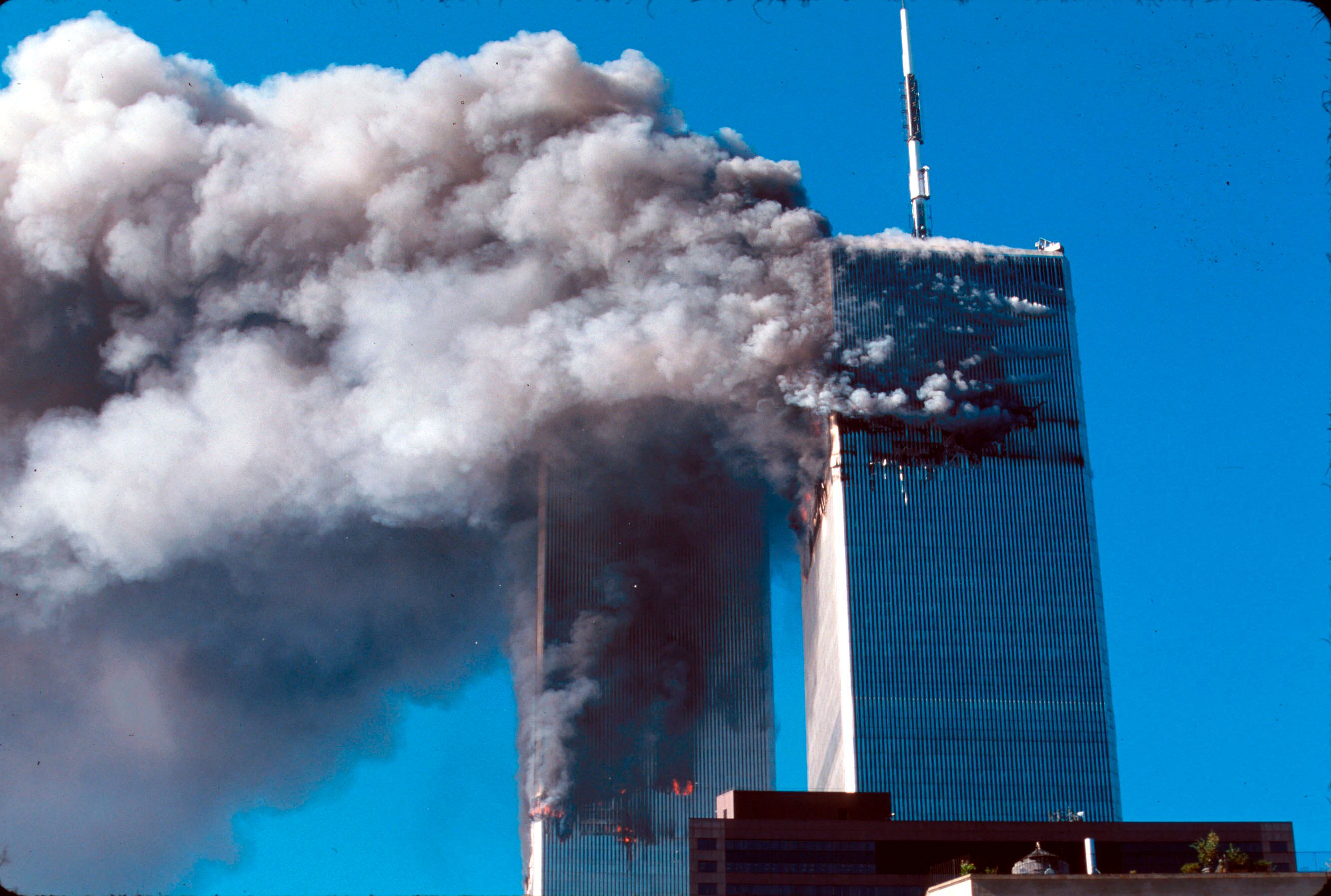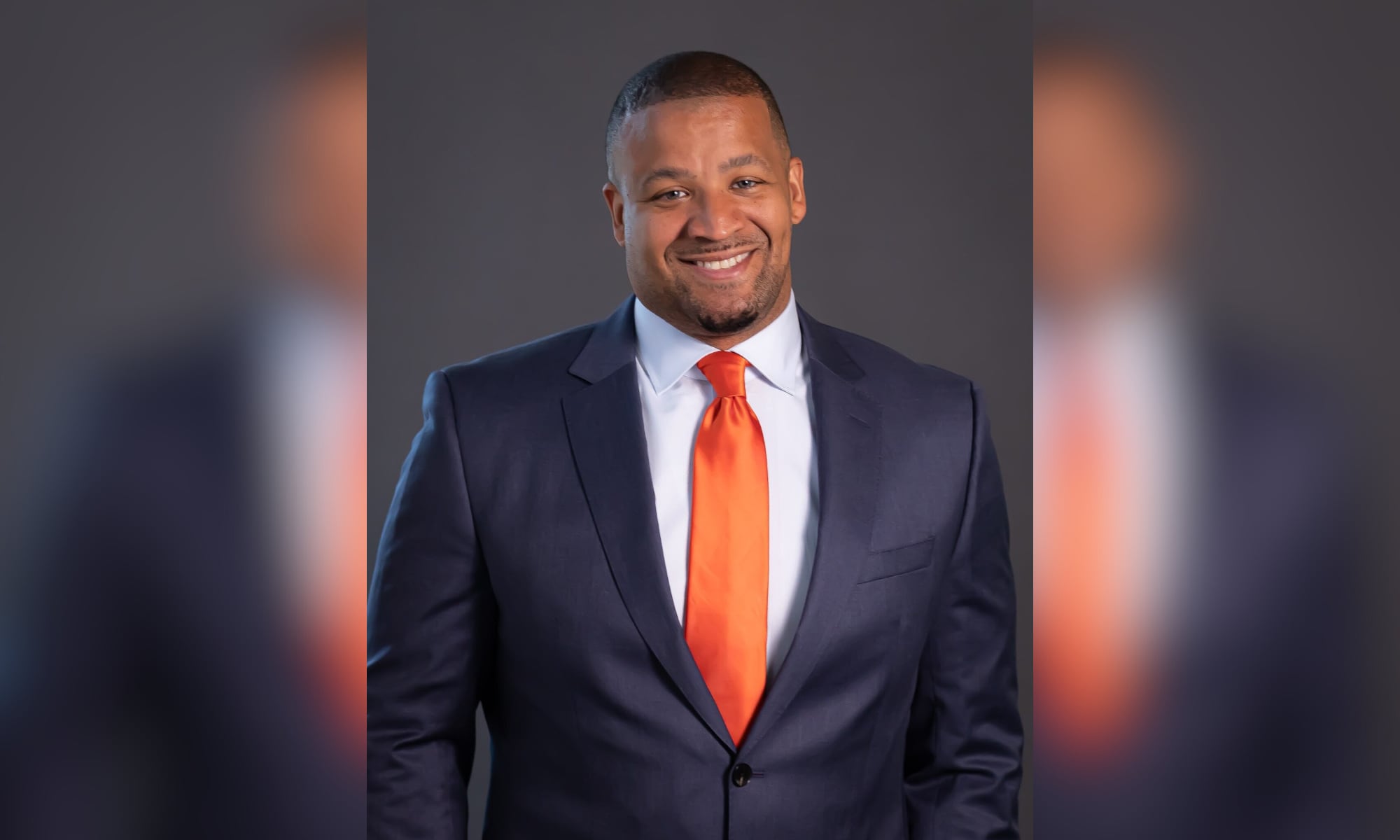Spc. Bryan Stern was hungover. It was a sunny near-autumn day, but after a night of partying to bid a friend farewell, he didn’t want to be anywhere but bed.
Stationed in Lower Manhattan with the 227th Military Intelligence Company housed at 7 World Trade Center, he was riding the subway to work from Brooklyn, wishing he had stayed home on September 11, 2001.
“I was having a slow, slow morning,” he told Military Times. “I was just kind of in my own little world.”
Struggling, he continued his daily routine, making a much-needed stop at a street cart where he’d order a bagel and coffee each morning.
“My friend, I’m so happy you’re okay,” the cart owner said. Not feeling particularly fine, Stern asked what he meant.
The cart owner pointed up, at the flaming hole in the side of 1 World Trade Center.
Nearly 3,000 miles away at Marine Corps Air Station Miramar in San Diego, California, Lt. Amy McGrath was sound asleep when her sister called to tell her to turn on the news. A plane had hit the World Trade Center.
“I hung up and thought to myself that it was probably just a Cessna,” she said.
Unable to reach anyone using his early-era cell phone, Stern made his way to the building, hoping he might be able to assist with whatever had happened.
“I figured people needed help,” he said. “I have a lot of medical training, so I made my way down and I was just north of the South Tower, right in between them.”
Then a plane smashed into the second tower.
“I felt it on my face,” he said. “The exit hole of the second tower was right above me. I thought, ‘Holy shit, I’m going to get clobbered with all this debris.”
McGrath turned on her television just in time to see footage of the plane making impact. Her command called and asked her to head to the base.
“I got my flight suit on, put my flight boots on and got in my car,” she said. “Because I lived so close to the gate, I was one of the first air crew on the base that morning.”
Staff Sgt. Stefan Still was stationed at Fort Myer with the Army’s Old Guard, just outside Washington, D.C., and three miles from the Pentagon.
“It was just an absolutely beautiful morning,” he said. “It’s kind of the first morning where the temperature had broken and it first started to feel like fall.”
After PT, while waiting for assignments, he and members of his platoon were listening to the radio when they heard about the crash in New York. They switched a television to CNN.
And then they felt their building shake. Flight 77 had crashed into the Pentagon.
“As I’m opening the door, I can already see the smoke coming up,” he said.
Still instructed his unit to call their loved ones and tell them they were okay. He phoned his wife at the time, who was still sleeping. She screamed as she turned on the TV.
“It’s a very surreal feeling to see F-16s churning and burning above the barracks when you’re underneath combat air patrol for the nation’s capital,” Still said. “It’s not something that you should ever really see.”
Col. Randy Rosin was stationed at U.S. Central Command in Tampa, Florida. While he believed the first plane crash into the side of the North Tower was an accident, when the second tower was struck, he quickly began to piece together exactly what was happening.
“We had all this activity that was going on, this chatter — they called it the ‘big wedding,’” he said. “In August, there was an intelligence assessment that came out, that said that something big is going to happen. But they placed it in Africa not New York.”
When the second plane hit the south tower, he began to realize that perhaps the intel about this large-scale al-Qaida event was correct about everything but the location.
Rosin, who had previously worked on plans for a response to the USS Cole bombing — the al-Qaida suicide attack against the guided missile destroyer on Oct. 12, 2000 in Yemen — recognized that the two attacks could be connected.
“I started to think, ‘Holy shit. This is the big wedding.’”
Stern was injured and bleeding from surface cuts. People were screaming, running in every direction. Medics treated him, and he returned to the base of the towers to continue helping. A few workers in the towers even began jumping, hopelessness spread, and panic ensued.
Then the second tower began to fall.
“I ran north,” Stern said. “My big idea was to get onto the West Side Highway kind of and bolt. There are no words to describe it. I remember thinking I’m going to die, I hope that I’m found, and I hope it’s not too painful.”
He found a car to hide under, and as the plume of debris washed over everything in sight, Stern waited to die. Minutes or maybe hours later, he emerged, with a mouth full of soot, and made his way back towards Ground Zero. Along the way, he spotted a friend.
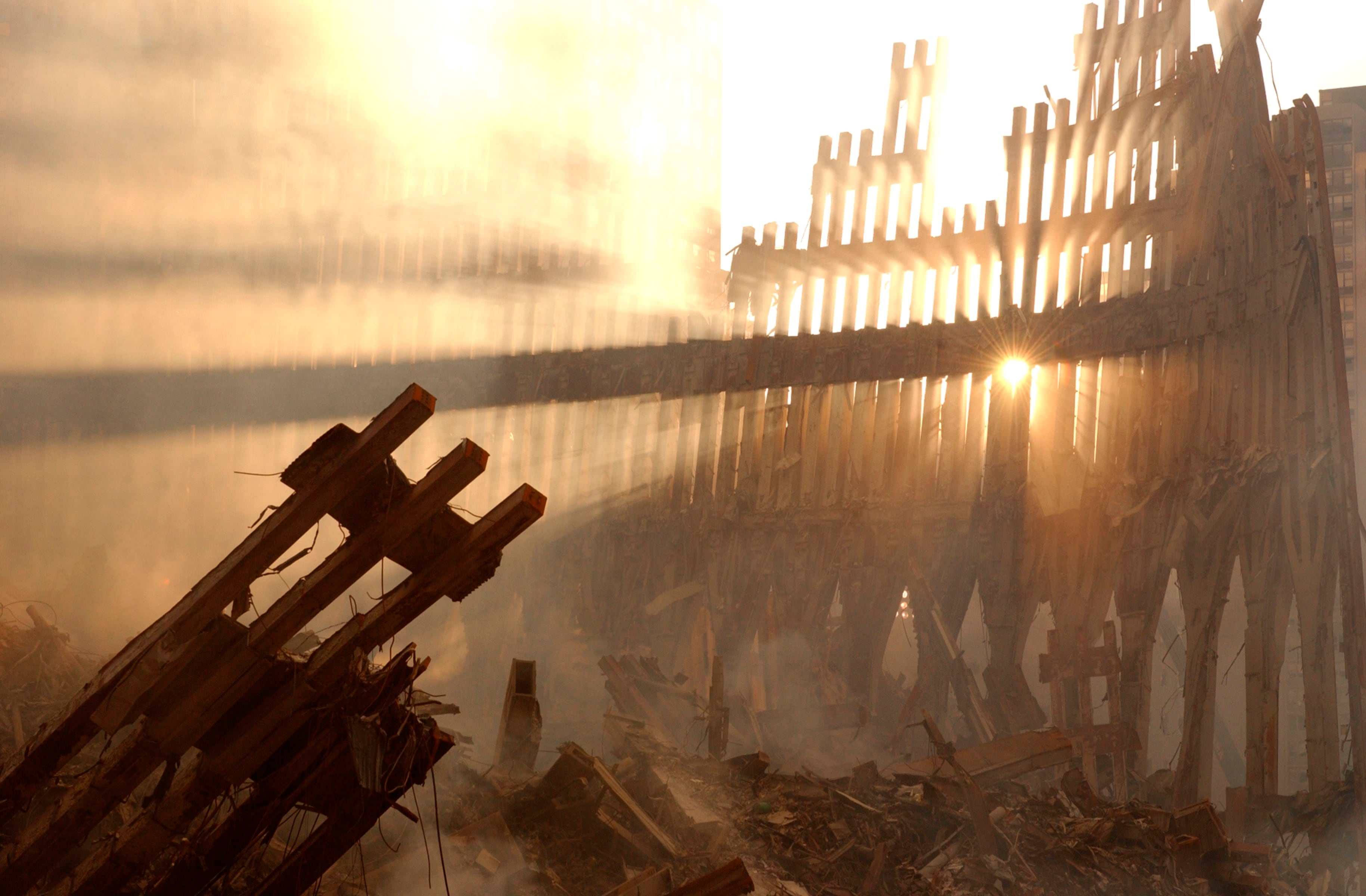
Looking for a bathroom, the pair stumbled across the only building with lights on — 340 West Street, a Bloomberg office with a generator. With permission from a lingering employee, the pair worked to set up a mobile command center to direct survivors stuck in lower Manhattan to safety.
Stern stepped out for a cigarette when he noticed something odd.
“There’s a little city bus stop, and all the glass is gone,” he said. “I looked down and there’s this American flag. It’s all crumpled up and messed up, and had probably been hanging over a building somewhere before.”
He picked it up, hung it over the door of the building, and he and the friend called the Army to connect with survivors in the city.
“Just tell them to look for the flag,” they said.
McGrath, had never flown in combat, but was ordered to board a jet and take it to the edge of the runway, leave the engines running, and await further instruction.
“I played scenarios out in my head,” McGrath said. “[I wondered] ‘Could we escort first?’ We didn’t train for this. We were sort of making it up as we went along in the hopes that we would never have to do the unthinkable.”
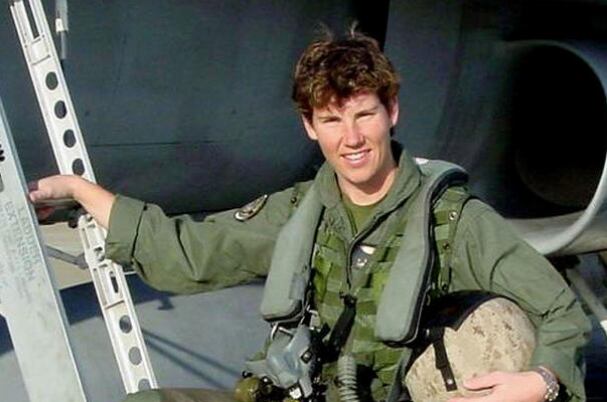
The orders she expected were to shoot down any hijacked aircraft on the West Coast headed towards densely populated centers or key buildings — planes that were transporting civilians, American men, women and children.
It never came to that. After several hours, McGrath was relieved, but she knew this assignment was just the beginning of what was to come.
Still’s orders came the next day. His unit was one of several selected for recovery duty at the Pentagon.
“It’s one thing to see that on television,” he said. “But it’s another thing to actually pull up to the site itself. It’s still smoking, it’s still on fire.”
His job was to pull casualties from the wreckage. His unit worked the lower floors. He felt lucky because there the intact bodies were fewer.
“Most of what we were dealing with, we knew was a human at one point,” Still said. “But you could just disassociate yourself from what it was because it was just a foot or a hand, as opposed to the higher floors. They were dealing with people that died of smoke inhalation.”
For Stern, Sept. 11 was a tipping point in his career and his life. He left the Army and recommissioned with the Navy, working with intelligence and special operations, and dedicated much of the last 20 years to homeland security.
Every day, when he leaves his house, however, he is reminded of that sunny Tuesday. The flag that served as a beacon for survivors at 340 West Street is prominently displayed in his living room. He recently reframed it, and it brought him straight back to lower Manhattan.
“It still smells,” he said. “It smelled like dust and dead people when I took it out of the frame. I had to go take a walk because it still smells like Ground Zero.”
Stern said that for years after 9/11, he was unable to go near construction sites because of the smell of the concrete and the sweat on the workers.
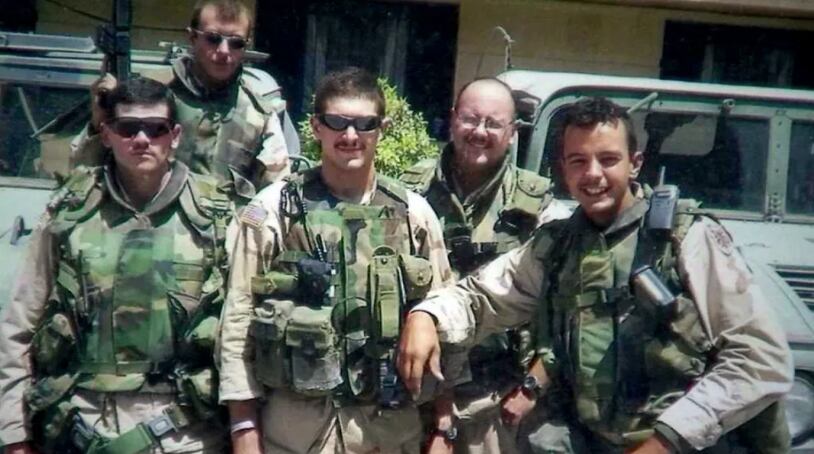
Reminders of the day can be difficult to contextualize for those who served.
“How do you transition back from seeing all of that to going home and seeing your family and seeing your wife and seeing the dog?” Still said. “There was a lot of anger, I think in my heart.”
Still, whose unit didn’t deploy to Afghanistan or Iraq, got out of the Army. He thought about rejoining so that he could be part of a combat unit, but ultimately chose to separate from service after two more years. He keeps in touch with members of the platoon he served with on Sept. 11.
He noted, however, the way that the events that followed the attack altered the fabric of the military.
“Everybody that signed up post-9/11, every single one of them knew they were going to war,” Still said. “I don’t know if I would have been the person that would have done that absolutely knowing 100 percent and I’m deploying to Afghanistan or Iraq soon after basic training.”
Reflecting on the last two decades of war, McGrath said the military has made great strides in inclusion and diversity that never would have come if not for 9/11.
“When we deployed to combat, we were the first women to deploy in these roles,” McGrath said. “We were very aware that we were the first, not only from a combat aircrew experience, but also the maintainers and the mechanics that came out. This was really the first time that a combat unit like ours was integrated with women actually doing combat.”
She said the way women stepped up into combat roles during the Global War on Terror is part of the reason why, in 2015, all military occupations across all four branches were opened up to women.
“Our performance in combat was a big part of why no one could make the argument effectively that we should keep these doors closed to women, to all these other jobs,” she said. “I’m not sure that would have happened had it not been for our combat time after 9/11.”
McGrath herself deployed to both Afghanistan and Iraq, retiring in 2017 at the rank of lieutenant colonel. In 2020, she challenged Sen. Mitch McConnell for his Kentucky seat and lost. But now she will teach national security studies at the college level.
After four administrations and nearly 20 years at war, President Joe Biden, committed to pulling U.S. troops out of Afghanistan this summer. The withdrawal and evacuation, which was finalized Aug. 31, leaves veterans of America’s longest war with questions.
“We are asking ourselves, did the sacrifices of our families, and those people who lost their lives and their families, who were our friends, was it all worth it?,” McGrath said.
In the span of a few weeks, the Afghan National Army ceded power to the Taliban and ISIS-K attacked evacuees, leaving 13 U.S. service members and 170 civilians dead.
“The gains of the Taliban have been happening for at least a decade,” McGrath said. “Did anybody think it would happen in in four days — a complete collapse of the Afghan government and the Taliban taking over the entire country? No.”
For Rosin, the events of August 2021 signal the end of an era. His entire immediate family has served in this war in some capacity, including his daughter.
“My wife did three tours with USAID and Afghanistan, I did a tour, our daughter did a tour,” he said. “It really disrupted our lives. And this was the inevitable outcome once we said we were going to leave.”
Now, McGrath advocates that to preserve the legacy of those that fought in the Global War on Terror is to prevent another 9/11.
“I want to remind people that their service mattered because our country hasn’t been attacked, in the same 9/11 style for the last 20 years from Afghanistan‚” she said. “I’m not sure that we could have said that had we not gone there, at least initially.”
While saddened, she doesn’t believe the events of the last month should take away from what the U.S. military set out to do twenty years ago.
“The initial reasons to go in after 9/11, were right and true,” McGrath said. “They had attacked our country, and they needed to be ousted. And I’m proud that we did that. We did it swiftly, we did it with the full backing of the American public, and not only did we do it with the full backing the American public, we did it with the full backing of the world.”
Sarah Sicard is a Senior Editor with Military Times. She previously served as the Digitial Editor of Military Times and the Army Times Editor. Other work can be found at National Defense Magazine, Task & Purpose, and Defense News.
